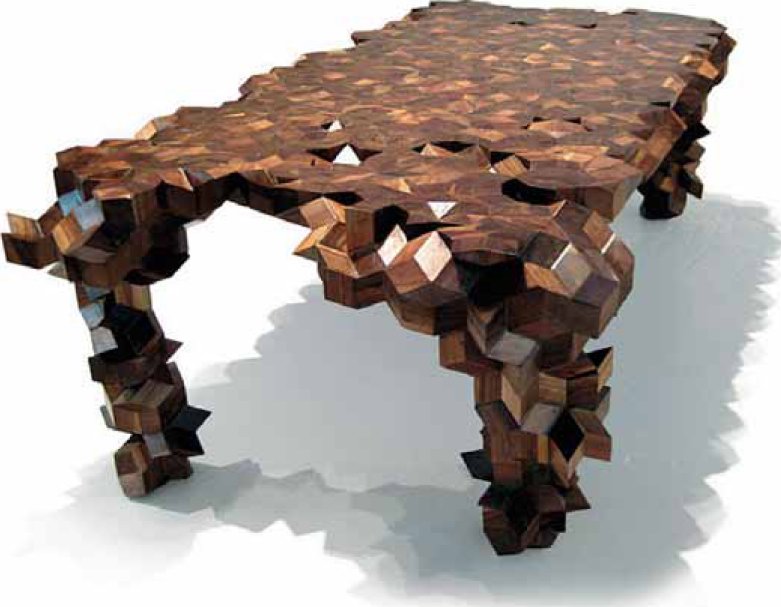European Walnut (Juglans regia)
Wood is for many people a status symbol. Like the metals family, wood carries with it a rich history of associations, references and stories. Combined with the decadent smell of leather, the interior of a car is one of the places where these aspirational qualities are valued most highly. Even with cuttingedge technology elsewhere in the car and the use of advanced materials, wood still occupies a strong position in creating consumer stories.
Walnut is one of those woods that is as famous for its natural decorative qualities as it is for the fruit that it bears. From the period of around 1620–1720, which became the ‘Age of Walnut’ due its use in fine English furniture, to its use in that most British of cars, the Jaguar, there are strong associations surrounding this wood. There are three main groups, and European walnut is distinguished from American or South American walnut by having a more wavy pattern and being a warmer brown, but all have similar working properties. Its mechanical properties are characterized by medium bending strength comparable to beech, high crushing strength and stiffness.
Apart from the trunk, the roots of walnut also provide a good source of timber which is why it is sometimes dug around. Besides its fruit the walnut tree has other by-products such as tannin, which can be distilled from the leaves to make an antidote to poison. The nuts are also well known for their oil.
Image: Quasi table by Aranda/Lasc

Key features
•Medium density: 610 kg/m3 (40 lbs/ft3)
•Hard and resilient
•Colour can vary
•Natural wavy grain
•Steam bends well
•Easy to work
•Finishes well
Cost
Relatively high cost.
Sustainability issues
According to research by Purdue University in the USA, potentially warmer, drier summers and extreme weather events as the climate changes could possibly be fatal for walnut trees. In the UK Jaguar has sponsored a 72 hectare community woodland project planted with walnut trees.
Production
As with all timbers, and indeed living things, the harvesting and the cutting of the material can yield different end results in terms of performance and aesthetic. One of the prominent uses of walnut is the slicing or the tree into veneers to sometimes produce what is known as a walnut burr, where the grain runs in all directions providing a look much admired in antique furniture and the interior of the Jaguar car, where it is coated with a durable polyester wax-free coating to enhance the toughness and assure that these symbols of success fulfil their long-term warranties. Walnut has very good steam-bending properties and it stains and finishes very well.
Typical applications
Throughout European history walnut has been used for fine cabinet work and high-end applications for gun and rifle stocks, shop fittings, furniture and interior joinery. It is used as a highly desirable decorative veneer for furniture, interiors and car dash-boards. It has a moderate durability but there are far more suitable timbers for exterior applications.
| + | – |
|
–Easy to work –Steam bends very well –Highly decorative finish |
–Becoming unsustainable, so limited availability –Relatively high cost |
